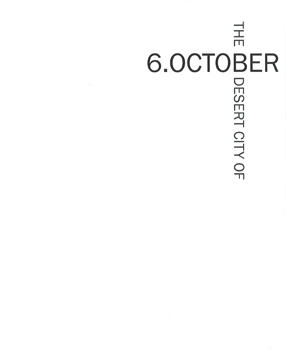The Desert City of 6. October

Students: Brian Lee, Magnus Nickl
Location: Cairo
Date: October, 2010
Type: Research project, student work
Like many world cities, Cairo has grown rapidly over the past few decades, from an estimated population of 3.3 million in 1960 to 9.6 million in 1995. Today the estimated total population for metropolitan Cairo may be as large as 20 million. The post-WWII urban sprawl largely occurred on the northern edge of the city, where the transformation towards a multi-nodal Greater Cairo Metropolitan Region (GCMR). In the deserts to the east and west of the city, new economic centers are emerging to accommodate commercial users in need of space not readily available in central Cairo.
The framework for this decentralization is the new town policy developed shortly after Egyptian independence in 1952. To address both national security and population redistribution goals the government under Sadat turned to a monumental frontier development policy. Viewed as means to preserve the center, the new desert cities were intended to be independent towns with their own economic basis. Following the Intifah (literally meaning “open door”) policies of Sadat in the 1970s, which ended socialist policies of the Nasser era and began economic liberalization, high-end suburban residential developments conditioned under the growing neoliberal economic climate are appearing for the first time.
This topic will look at the urban production under the first phase of the New Town policies, where the nationalism of its name—6th of October began the 1973 Yom Kippur War and how it contrasts with the contemporary developments of gated compounds such as Beverly Hills or Sheikh Zayed—named after the late president of the UAE. It will also look at components that make up the this spatial production, such as the lush landscaping for leisure that are planted in the desert and the enclosed open spaces that allow only limited access to the public, which are part of the larger trend of Gulfanization processes developing as alternatives to the existing cities.
Download the Book PDF

